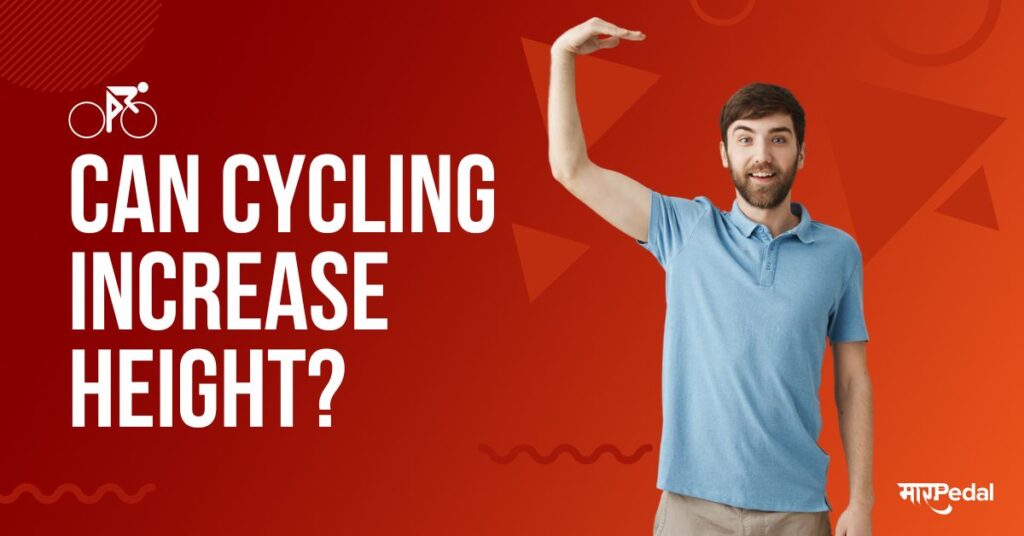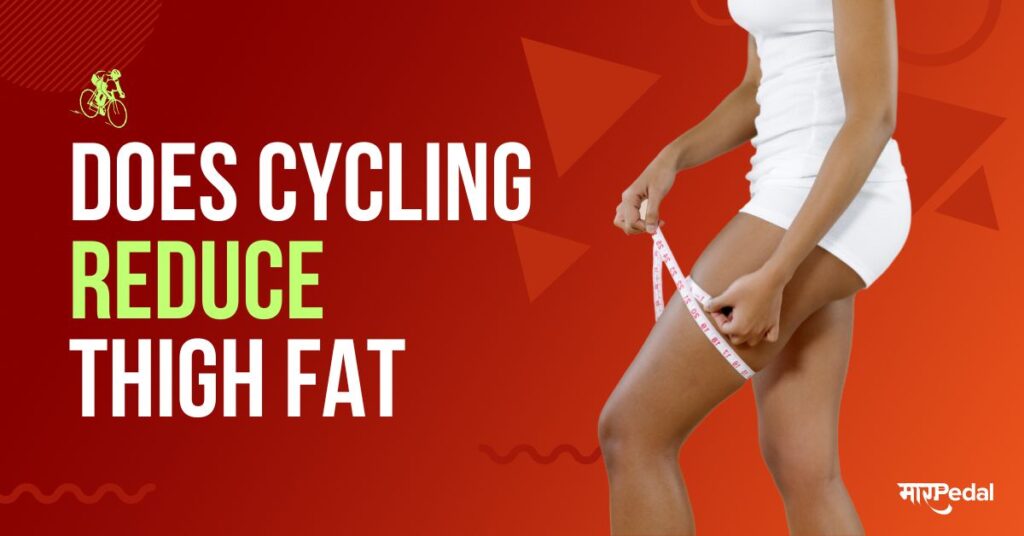
The hip flexors are a group of muscles located deep in the front of the hip that allow you to lift your knees upwards and bend at the waist. They connect the spine, pelvis and upper thigh bone. The primary hip flexor muscles used in cycling are:
- Psoas: Attaches your femur to your lumbar spine. It flexes your hip to pull your leg up towards your torso.
- Iliacus: Connects your pelvis to your femur. Works with psoas to lift your leg.
- Rectus femoris: A quadriceps muscle that originates from the ilium hip bone and inserts into the patella.
During the pedal stroke, the hip flexors contract to pull the knee up and forwards. Cycling for long periods leads to repetitive strain that can irritate these muscles and their tendon attachments. Tightness, muscle spasms, strain or tendonitis in the hip flexors can all cause pain.
Major Causes of Hip Flexor Soreness in Cyclists
There are several reasons you may feel hip/groin pain when riding a bike:
1. Tight Hip Flexors
Inflexible or stiff psoas and iliacus muscles get overstretched with repeated hip flexion while pedaling. This leads to tension, soreness and pain. Limited flexibility places excess strain on the muscles with each pedal stroke.
2. Muscle Imbalances
Overusing hip flexors while neglecting glutes/core causes muscle imbalance. Weak glutes allow hip flexors to overwork to compensate, resulting in fatigue, spasms and pain.
3. Improper Bike Fit Setup
A bike saddle that is too high will overstretch the hip flexors. Conversely, a saddle that is too low or too far forward can make you strain to reach the pedals. Both scenarios irritate the hip flexors.
See also: Butt Pain After Cycling – Here’s How I Got Relief! 🚲😌
4. Overuse and Strain
Heavy training load from high mileage or very intense cycling can simply overwork the hip flexors. Extreme hip and lumbar flexion while pedaling aggressively also strains these delicate muscles.
Symptoms Associated with Cycling-Related Hip Flexor Pain
Tell-tale signs of irritated hip flexors from biking include:
- Sharp, stabbing or dull ache in the front of hip/groin area
- Pain at top of the hip or front of pelvis
- Discomfort, difficulty or stiffness when standing up from a seated position
- Tenderness when pressing along the hip flexors
- Reduced flexibility and range of motion in hip joint
- Increased pain and stiffness after riding
Risk Factors for Developing This Issue
You have an elevated risk of hip flexor pain if:
– You cycle very high weekly mileage
Frequently riding over 50+ miles strains the hip flexors. Mileage should be built up slowly.
– You pedal excessively hard while standing or climbing
Aggressively mashing pedals in a standing attack position overworks the hip flexors.
– Your saddle is positioned excessively high
A saddle height higher than ideal forces excessive hip flexion when pedaling.
– You have naturally tight hip flexors and limited flexibility
Inflexible muscles are already strained so cycling aggravates them further.
– You have muscle imbalances and weak glutes
Your glutes cannot provide enough power so the hip flexors overcompensate while pedaling leading to overuse.
Effects and Complications of Hip Flexor Pain
Riding through pain leads to complications like:
– Decreased cycling performance
Every pedal stroke causes discomfort reducing power transfer and speed.
– Altered posture, gait and mobility issues
Standing and walking normally is impaired making your movement stiff and awkward.
– Higher risk of other pain or injuries
Compensating for hip pain can overload other areas like knees, IT band and lower back.
Seeking Medical Care for Hip Flexor Discomfort
You should get checked by a sports medicine doctor or physical therapist if you have:
– Severe and persistent hip pain
Sharp pain even at rest indicates serious injury requiring prompt medical attention.
– Symptoms lasting over 2 weeks
Extended duration could mean significant muscle damage.
– Discomfort causing limping or changes in posture
Kinetic chain imbalances from compensation require correction.
– Accompanying numbness or tingling
Nerve compression related to underlying bulging discs or hip impingement need evaluation.
How Hip Flexor Pain is Diagnosed in Cyclists
Your physio will diagnose pain from cycling by:
– Physical examination
Palpating the hips to pinpoint tender spots and assess joint mobility.
– Flexibility and strength tests
Testing range of motion and muscle function around hips.
– Analysis of cycling form and bike fit
Examining your riding posture, pedal stroke and bike setup.
Treatment and Rehabilitation of Hip Flexor Pain
Recovery involves rest, physiotherapy and optimizing bike fit:
– Reduce cycling intensity and volume
Avoid activities that aggravate pain until healed.
– Ice and anti-inflammatory medication
Icing helps relieve soreness, swelling and inflammation. Medication reduces discomfort.
– Stretching and strengthening regimen
Target flexibility and stability around hips and core.
– Massage
Helps loosen tight muscles and boost blood flow.
– Bike fit analysis
Ensures saddle height, fore/aft and handlebar position avoid hip flexor strain.
– Adjusting cycling technique
Switching gears often and smoothing out pedal stroke prevents overstressing hip flexors.
Best Stretches to Loosen Hip Flexors
Effective, therapist-recommended stretches include:
– Kneeling lunge hip flexor stretch
Kneel in lunge position, gently push hips forward until stretch is felt at front of the hip. Hold 30 secs.
– Butterfly stretch
Sit with soles of feet together, knees out to sides. Gently press knees down towards floor with elbows to feel stretch in inner thighs and hip flexors.
– Half kneeling hip flexor stretch
Kneel on one leg, place other foot forward with knee bent at 90 degrees. Push hips slightly forward until stretch is felt in front of straight leg hip. Hold 30 secs.
Key Strengthening Exercises
Boost surrounding muscle strength to reduce strain on hip flexors:
– Glute bridges
Targets weak glutes that contribute to overworking hip flexors.
– Clamshells
Improves hip external rotators and core stability to help powerful pedal stroke.
– Fire hydrants
Isolates glutes and prevents other muscles overcompensation.
Adjusting Bike Fit to Prevent Hip Issues
Key bike contact point adjustments include:
– Saddle height
Too high overstretches hip flexors, too low strains them. Height should allow slight leg bend at bottom of pedal stroke.
– Saddle fore/aft position
Too far forward overextends hip joint. Set to properly support sit bones.
– Handlebar alignment and spacing
Correct drop and width prevent excess lumbar flexion during cycling.
When Can I Start Cycling Again After Hip Flexor Injury?
Ease back into biking after:
– Full, pain-free range of motion is restored
Hip flexibility ensures muscles can handle cycling loads.
– Surrounding muscle strength rebalances
Strengthened glutes/core support hip function reducing flexor strain.
– No flare up after challenging test ride
Gradually increase distance/intensity. Stop if pain worsens and allow more recovery time.
Tips to Prevent Hip Flexor Pain When Cycling
- Maintain flexibility in hip flexors with regular, gentle stretching
- Strengthen core and glutes to provide power and take load off hip flexors
Ensure proper bike fit – correct saddle height, fore/aft position and handlebar placement
- Take easy recovery rides every few days to prevent fatigue
- Build cycling volume and intensity slowly over time
Long Term Outlook and Persistent Hip Flexor Discomfort
With proper rest, rehab and optimizing bike fit, minor hip flexor pain generally resolves within a few weeks. However, some cases can linger or keep returning. Recurrent issues usually indicate:
– Muscular imbalances persist
Core and glutes remain weak forcing hip flexors to overwork.
– Underlying poor flexibility
Inflexible muscles strain easily and don’t heal as rapidly.
– Bike fit problems continue
Improper saddle position maintains bad posture that strains hips.
Getting Professional Help for Hip Pain Relief
Seeking guidance from specialists can facilitate complete recovery:
– Physical therapists
Prescribe targeted stretch/strengthening programs and bike fit recommendations.
– Bike fit professionals
Analyze cycling position in detail and suggest equipment/adjustments to prevent overuse.
Rare Cases Requiring Hip Flexor Surgery
The odd severe case related to impingement or tears may need:
– Hip flexor debridement
Trimming damaged tissue irritating hip joint.
– Iliopsoas tendon release
Cutting over-tight tendon reducing stiffness and friction.
Alternative Medicine Therapies
Other options to alleviate stubborn discomfort include:
– Acupuncture
Can reduce muscle tightness and trigger point irritation.
– Chiropractic
Realigning pelvis/lumbar joints relaxing hip flexors.
Adaptive Cycling Options after Hip Injuries
Switching to bikes placing less extreme hip flexion demand can help recovery:
– Recumbent bikes
Reclined position significantly reduces hip flexor stretch.
– Upright or comfort bikes
Higher handlebars prevent excessive forward bend minimizing hip strain.
When to Stop Cycling with Persistent Hip Flexor Problems
Time for a extended break or permanently quitting riding if you have:
– Advanced arthritis in hip joint
Joint damage causes severe pain and loss of mobility during pedaling.
– Loss of hip flexor flexibility and strength
Inability to pedal smoothly due to pronounced stiffness and weakness.
Conclusion: Causes and Relief for Cycling Hip Pain
The hip flexor muscles are commonly irritated in cyclists leading to discomfort that hampers riding enjoyment. Fortunately, there are several effective prevention and rehabilitation strategies. Addressing flexibility limitations, strengthening weak areas and optimizing bike fit can help resolve issues before they become severe. Learning to listen to warning signs from your body and adapting training when needed goes a long way as well. With proper care, most cases of cycling overuse hip flexor pain can be managed successfully.
Frequently Asked Questions
What are symptoms of tight hip flexors?
Symptoms of tight hip flexors can include lower back pain, hip pain, trouble squatting or reaching down, poor posture, muscle imbalances, and reduced range of motion in the hips.
How do you loosen your hip flexors?
Some ways to loosen tight hip flexors include hip flexor stretches such as lunges, pigeon pose, and knee to chest; foam rolling; massage therapy; improving posture and core strength; staying active through walking, yoga, etc; and ensuring proper warmups and cooldowns before and after exercise.
Is walking good for tight hip flexors?
Yes, walking can be very good for relieving tight hip flexors. A moderate pace helps open up the hips and improve range of motion. Make sure to focus on good posture, keep your core engaged, and fully extend your stride while walking.
Why are hip flexors so important?
The hip flexors are important because they allow you to lift your knees and bend at the waist. They affect your ability to walk, run, kick, and even maintain proper posture. Weak or tight hip flexors can lead to injuries in the hips, back, and other areas.
Is it bad to have weak hip flexors?
Yes, having weak hip flexors can negatively impact your mobility and stability. Weak hip flexors make it difficult to lift your legs properly when walking, running or kicking. This can put strain on the knees, back and hips, and may lead to improper body mechanics and postural imbalances.
Is it good to have strong hip flexors?
Yes, having strong hip flexors provides many benefits. Strong hip flexors improve range of motion in the hips, allow you to lift your legs with ease, help maintain good posture, reduce risk of injuries, provide stability to the core and pelvis, and allow you to kick, run and jump with power. They are vital for both athletes and non-athletes.






